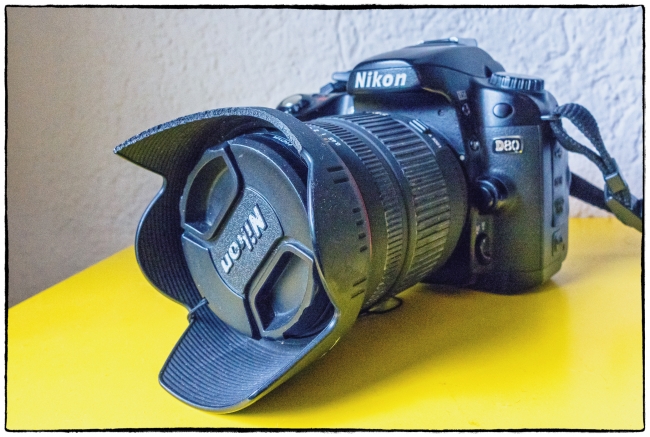The only camera I took on my recent trip to Geneva was my Sony RX100 M3. I love this camera, but the compromise for such a small camera with a relatively large sensor is that the lens only zooms to th 35mm equivalent of 70mm. I thought I might need something with a longer zoom (and of course I won’t miss the opportunity to try out a new camera) so I asked my son-in-law if I could borrow his Nikon D80 and Sigma 18-200mm f3.5-f6.3 lens. He agreed.
The Nikon D80 became available in the US around September, 2006. It has a 10.2 Megapixel CCD sensor and when it came out it was considered as an enthusiast camera fitting in between the entry-level D50 and the semi-professional / professional D200.
On picking it up it felt solid and well built. It powered up quickly and felt very responsive. Focus was quick and accurate and the viewfinder was large and precise. A nice feature was the LCD panel on the top plate. Although I didn’t try to customize the camera much, it was obvious that there were many options to do so. Menus were intuitive and easy to use. The LCD monitor was decent considering the age of the camera. Battery life seemed to be pretty good.
Images had good resolution and great detail and I really liked the colors. Exposure was all I wanted it to be.
I didn’t find anything much that I didn’t like.
Although this camera is now over 10 years old it’s extremely capable and I very much enjoyed using it. For general photography and web use, and if you don’t need to print much larger than 8×10 (and most people don’t) this is a fine camera. They seem to sell on ebay for about $100 for just the body, and maybe around $200 with a lens (when it first came out I believe it sold in the $1,000-$1,200 range).
Digital review has a detailed review.
As for the lens. A 15 August, 2005 review in Ephotozine, concludes:
This lens once again proves that it is extremely difficult to produce the ideal all-in-one lens. Whilst this one is very good at the wide end, it does start to show the limitations of the design type at the long end. But if you consider the advantages of just having the one lens and the reduction in lens changes that could let in dust, there are some saving graces. All in all it is a nice lens if you can put up with the long end fall off.
In summary the main positive points of the Sigma 18-200mm f/3.5-6.3 DC are:
- Performance at wide end
- Focal Range
- Size and weight
- Easy Manual Focus
Negative points are:
- Optical quality falls off towards telephoto end
- Autofocus a little noisy and slow.
I was fine with the results produced.
For some pictures taken with this camera see:

